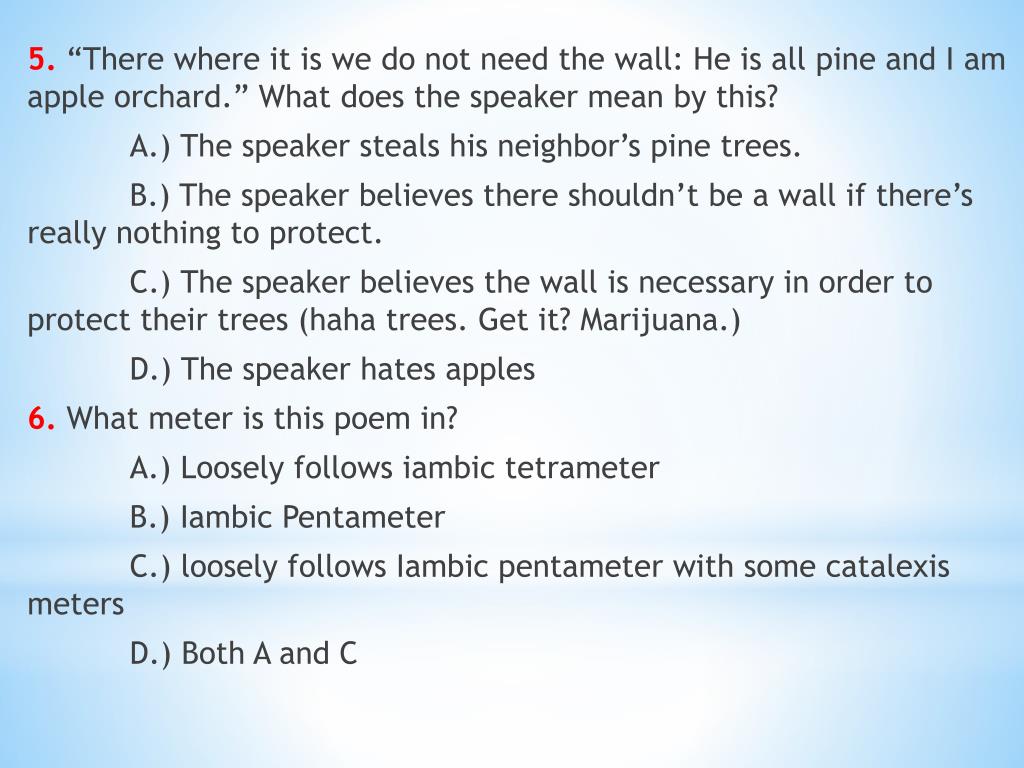
While the narrator tries to make his neighbor understand that they don’t need a wall, his neighbor is a stone-headed savage, who only believes in his father’s age-old saying that, “Good fences make good neighbors.” Moreover there is no chance of offending one and another as they don’t also have any cows at their homes. How could his apple trees go across the border and eat his neighbor’s pine cones. He asks why should there be a wall, when his neighbor has only pine trees and he has apples. He believes that in fact both of them don’t need a wall.


Though the narrator comes together with his neighbor to repair the wall, he regards it an act of stupidity. Hence, as soon as the spring season starts, he (narrator), with his neighbor, sets out to repair the wall that keeps their properties separated. He says man makes many walls, but they all get damaged and destroyed either by nature or by the hunters who search for rabbits for their hungry dogs. Therefore, the narrator says something does exist in the nature that does not want a wall. The reader understands life in a new way and challenges all definitions.Īt the very outset, the poem takes you to the nature of things. Yet the quest is more thrilling and rewarding as compared to the Holy Grail itself. The reader analyses, philosophizes and dives deep to search for a definite conclusion that he is unable to find. When you read ‘Mending Wall’ it feels like peeling off an onion. ‘Mending Wall’ principally analyses the nature of human relationships. The poet says that there is something that doesn’t love a wall, but his neighbor says, “Good fences make good neighbors.” As they start mending the wall, the narrator asks his neighbor why we need a wall. In the poem, the poet is a New England farmer, who walks along with his neighbor in the spring season to repair the stone wall that falls between their two farms. In modern literature, it is considered as one of the most analyzed and anthologized poems.

Scansion mending wall full#
Frost’s ‘Mending Wall’, which can also be read in full here, was published in 1914 by David Nutt.


 0 kommentar(er)
0 kommentar(er)
